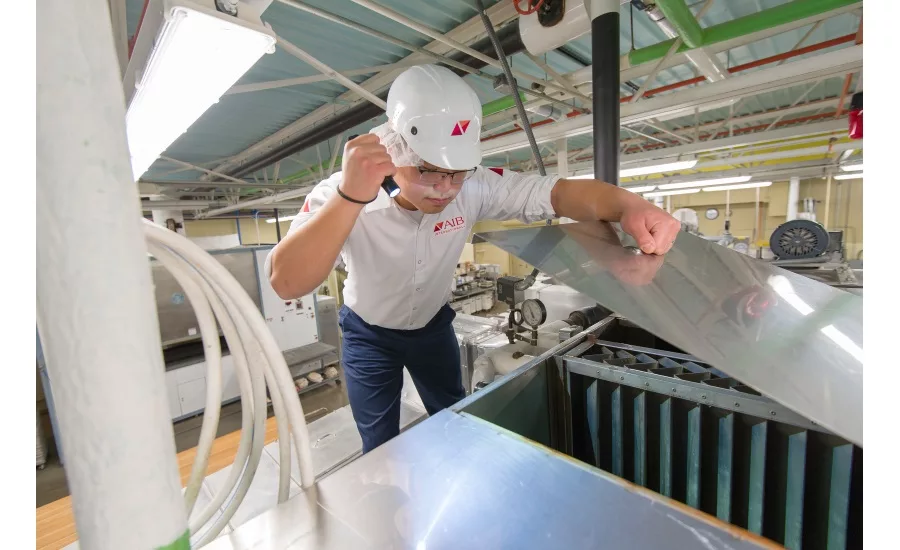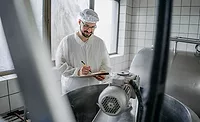Current best practices for developing sanitation standard operating procedures (SSOPs)

One of the core components of a fully implemented food safety plan are sanitation controls. Sanitation controls, as described in U.S. Food and Drug Administration’s Food Safety Modernization Act (FSMA) Final Rule for Preventive Controls for Human Food, are “procedures, practices and processes to ensure the facility is maintained in a sanitary condition to minimize or prevent hazards such as environmental pathogens, hazards from employees handling food, and food allergens.” Procedures and practices that ensure consistent outcomes in obtaining and maintaining a site that meets the definition are Standard Sanitation Operating Procedures (SSOPs). Essentially, SSOPs define the chemicals, tools, and step- by-step processes required to clean a piece of equipment or structure.
Equipment cleaning procedures (SSOPs) provide the basis for consistent cleaning of equipment and structures and define the tools, equipment, and sequencing of steps to effectively and efficiently restore equipment and/or facility structures to a clean and food safe condition. They provide a basis for training of employees to ensure consistent outcomes.
Assessment of the equipment, structures, and type of soil will determine the order and flow of the cleaning process in a facility. We cannot defy the laws of gravity which means, logically we start from the top and work our way down when determining cleaning order.
No matter the type of soil you are trying to remove, a consistent structure should be developed and followed for developing each procedure. Use of digital photography will allow embedding of photographs and colored and bolded text may be used call out key information. Saving them in an electronic format will ease updating of the documents, should the site introduce new cleaning chemicals, techniques, or equipment that enhances the process. Revision dates or a method of document control will identify the most current document to be used.
Each document should contain, at a minimum, the components listed below:
- Name of equipment/structure to be cleaned
- Personal Protective Equipment (PPE) or personal safety equipment required to do the task
- Chemicals, if applicable, needed to clean the piece of equipment. This will include the type, brand, name, and concentration. Chemicals may be dispensed automatically from a station or may need to be mixed. If they are mixed, mix instructions, to include testing for concentration, as applicable, will need to be incorporated in the procedure. Chemicals identified for cleaning will depend upon the soil to be removed.
- Equipment to complete the task, such as color-coded brushes, foam applicators, pressure washers, tools, etc.
- Pre-cleaning steps, such as how to render the equipment safe to work on and protection of sensitive components, such as electronics, may be defined as preliminary steps in the process.
- Step-by-step instructions, in easy to understand language, with incorporation of pictures aid in ensuring that steps in the process are easy to follow and understand.
- Criteria for evaluation of successful completion of the process may be defined. Examples include visual inspection of the surface to verify removal of residue, ATP swabbing, allergen swabbing, microbiological swabs, or in the case of the use of an automated cleaning system, such as Clean in Place (CIP), pH testing of the rinse water to ensure removal of all chemical as part of the process.
- Any additional steps, such as removal of parts to be cleaned in a different area or using differently methodology, should be included. Examples may include COP (Clean out of Place) tanks, boil tanks, or rack washers used to clean components of the piece of the equipment addressed within the procedure.
- Reassembly and inspection to ensure that equipment is ready for production, which may include accounting for parts and tools that could have been left behind in an area that could cause contamination of product.
So once the procedure has been written, how do we vet the procedure to verify that it will achieve our intended outcome? Remember, this document not only is a means to ensure consistent and efficient cleaning, it is also a training document. Use the document to train a new employee or a person unfamiliar with cleaning the piece of equipment or structure. This will determine where there are gaps in the procedures, missed steps, or clarifications that are needed.
SSOPs are living documents and will need to be reviewed and updated. If this is not included as part of the change management program when changes, such as equipment removal, new equipment installation or upgrades, changes in chemical providers, or as different issues emerge, the SSOPs for the facility will not meet the new process requirements. This will also need to include training of personnel on the updated SSOPs and evaluation to ensure that all steps are defined as part of the revised or newly implemented procedure. Collection of old or obsolete documents will need to be included as part of the change management process. If review of SSOPs is not included as part of your change management procedures, then failures and inefficiencies may lead to additional costs for cleaning and failure of the site to provide a facility that meets the requirements defined as part of the sanitary controls for FSMA.
Learn more about SSOPs with AIB International’s GMP and Sanitation Training.
Looking for quick answers on food safety topics?
Try Ask FSM, our new smart AI search tool.
Ask FSM →







